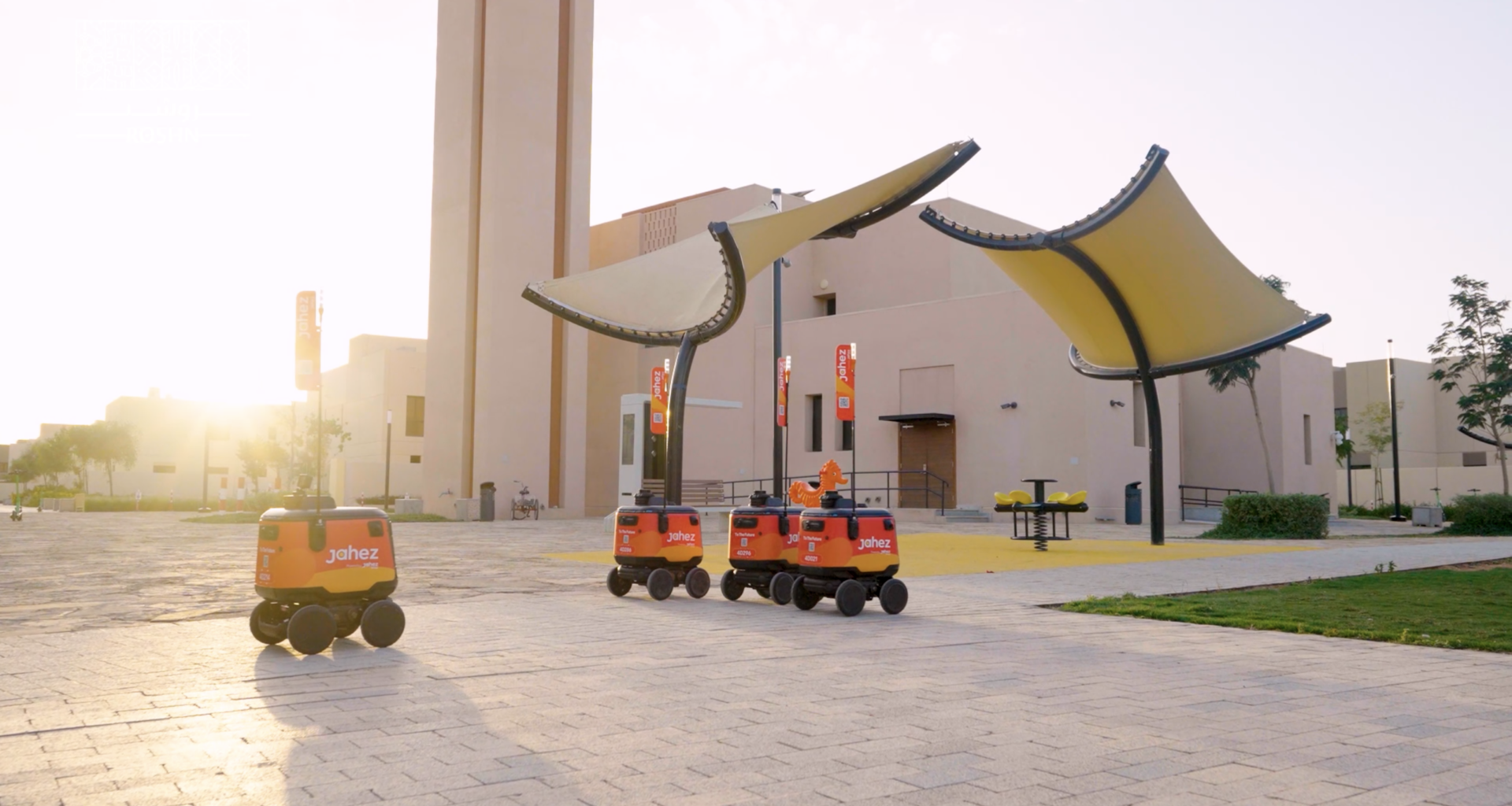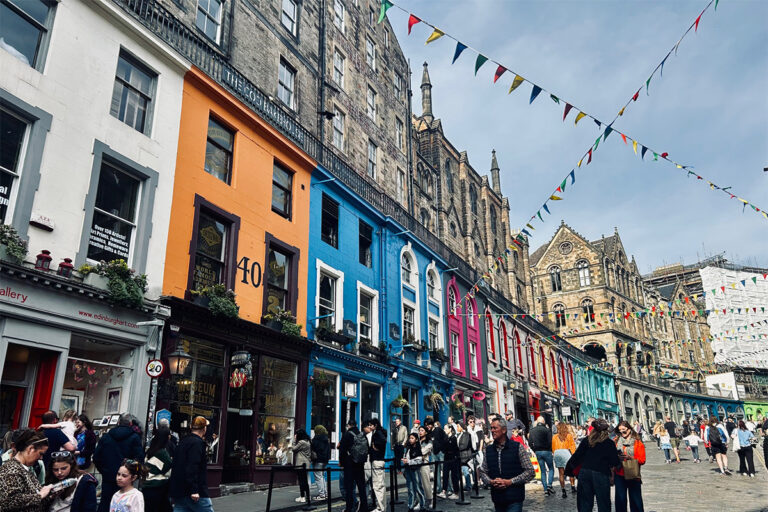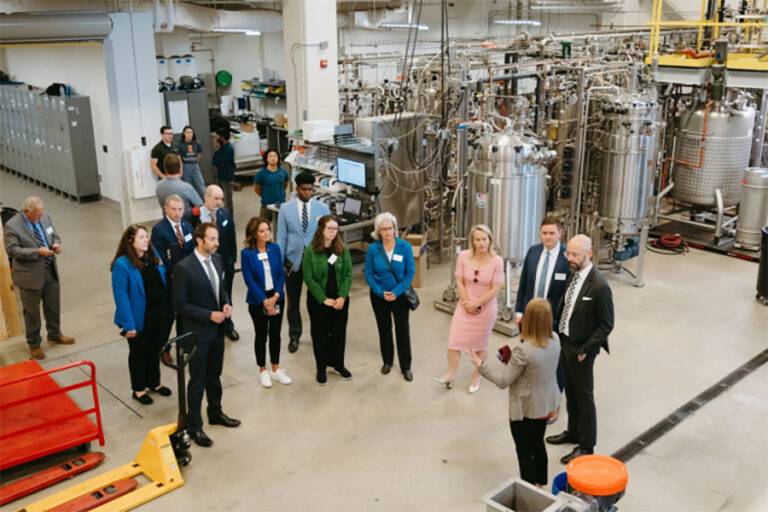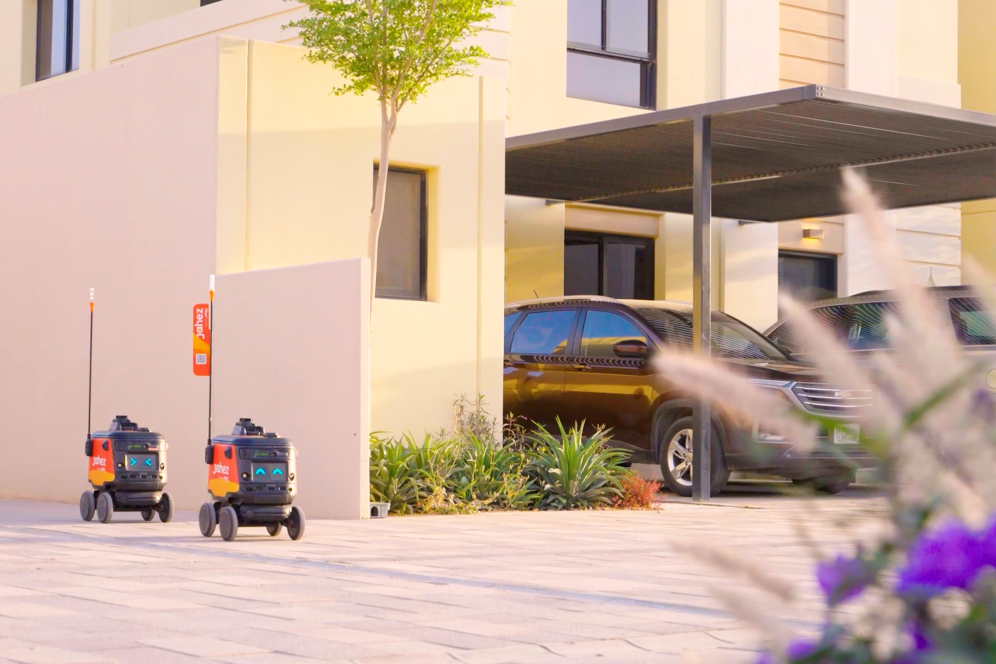
Autonomous vehicles (AVs) are no longer the stuff of sci-fi; they’re fast becoming a reality. We’ve all heard the stories—cars that drive themselves, trucks that cover hundreds of miles on autopilot, even drones that handle emergency medical supplies. While these examples inspire awe, they also bring a key question: how will AV technology truly integrate into our everyday lives? When and where will we first see AVs become a part of our routines?
In Saudi Arabia, an unexpected sector is leading the way: residential delivery. Through an exciting collaboration, ROSHN, a national real estate developer committed to enhancing quality of life, and Jahez, a top food delivery platform in the country, are taking the concept of AVs and applying it in the form of delivery robots in ROSHN’s communities. This pilot isn’t just about convenience—it’s about reimagining mobility for a new era, reducing traffic, enhancing sustainability, and bringing a touch of futuristic charm to the neighborhoods of tomorrow.
ROSHN isn’t an ordinary developer. Established as part of Saudi Arabia’s Vision 2030, ROSHN aims to create vibrant, sustainable communities that embrace technology, preserve resources, and elevate residents’ lifestyles. ROSHN’s vision aligns with key national pillars: enhancing quality of life, addressing the kingdom’s housing needs, and championing environmental responsibility. The company envisions spaces where technology isn’t just an afterthought—it’s a core element, enriching the lives of residents while supporting the country’s ambitious vision for transformation.
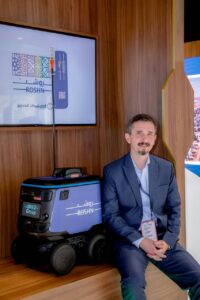
Enter the ROSHN-Jahez pilot, which introduces AV tech in the form of food delivery robots stationed within “mobility hubs” across ROSHN neighborhoods. “We partnered with Jahez to bring autonomous food delivery robots to life,” explains Adnan Amro, ROSHN’s director of innovation. These robots are strategically placed in hubs, areas where residents can access e-bikes, scooters, and EV charging stations, among other transportation options. Once a delivery arrives at a hub, the robot takes over, gliding autonomously through the community to complete the final stretch to the customer’s doorstep.
This setup has a range of benefits, from reducing in-neighborhood traffic to lowering emissions. But it also makes the delivery process more fun. “We’ve received enthusiastic feedback from residents,” Amro notes. “Imagine kids in the community watching their meal being delivered by a robot—it’s exciting!” Though the pilot has been a hit, the team has faced technical challenges along the way. ROSHN’s robots operate in residential environments, which means navigating complex paths and unpredictable scenarios within the community. The robots’ ability to adapt to these conditions is an ongoing focus, with continuous refinements based on real-life feedback from residents and ROSHN’s community management team.
Another challenge? Kids love to interact with these futuristic delivery robots—and, sometimes, a bit too much. Amro laughs when asked how the team handles playful attempts to interact with the robots. The solution lies in spreading awareness and promoting respect for these high-tech helpers. “It’s about creating a culture of appreciation,” he explains, adding that ROSHN has launched campaigns to teach residents about the robots’ role in the community.
“This isn’t just about delivery—it’s bringing a touch of futuristic magic to everyday life.”
Adnan Amro, ROSHN director of innovation
Behind the scenes, ROSHN’s digital twin technology is what makes these deliveries seamless. “Each house within our communities is treated as a digital asset with a unique identifier,” Amro shares. This digital infrastructure allows robots to find the correct address every time, minimizing mix-ups and ensuring that, say, Adnan’s shawarma doesn’t end up at his neighbor’s door. The system links directly to Jahez’s order process, bringing together ROSHN’s housing assets and the delivery logistics on the backend.
Safety, too, is front and center in this pilot. Each robot is equipped with sensors to detect motion and pause immediately if there’s a potential obstacle. If a robot does happen to tip or face an unexpected issue, it sends a signal to a control center where supervisors can quickly intervene.
The partnership between Jahez and ROSHN is more than just a tech experiment—it’s a reflection of Saudi Arabia’s Vision 2030. By pushing the boundaries of what’s possible in residential environments, ROSHN is creating a community model that embraces digital transformation and sustainability. “We see this robot as a contributor to the mobility aspect, which drives into the quality of life—a major pillar of Vision 2030,” says Amro.
With plans to scale and refine the system, ROSHN and Jahez are showing that autonomous technology isn’t just for city streets or warehouses. It can bring value—and a bit of magic—to everyday spaces. The pilot’s success shows that autonomous technology can seamlessly blend into daily life, delivering more than just convenience—it brings a glimpse of the future right to our doorsteps.





